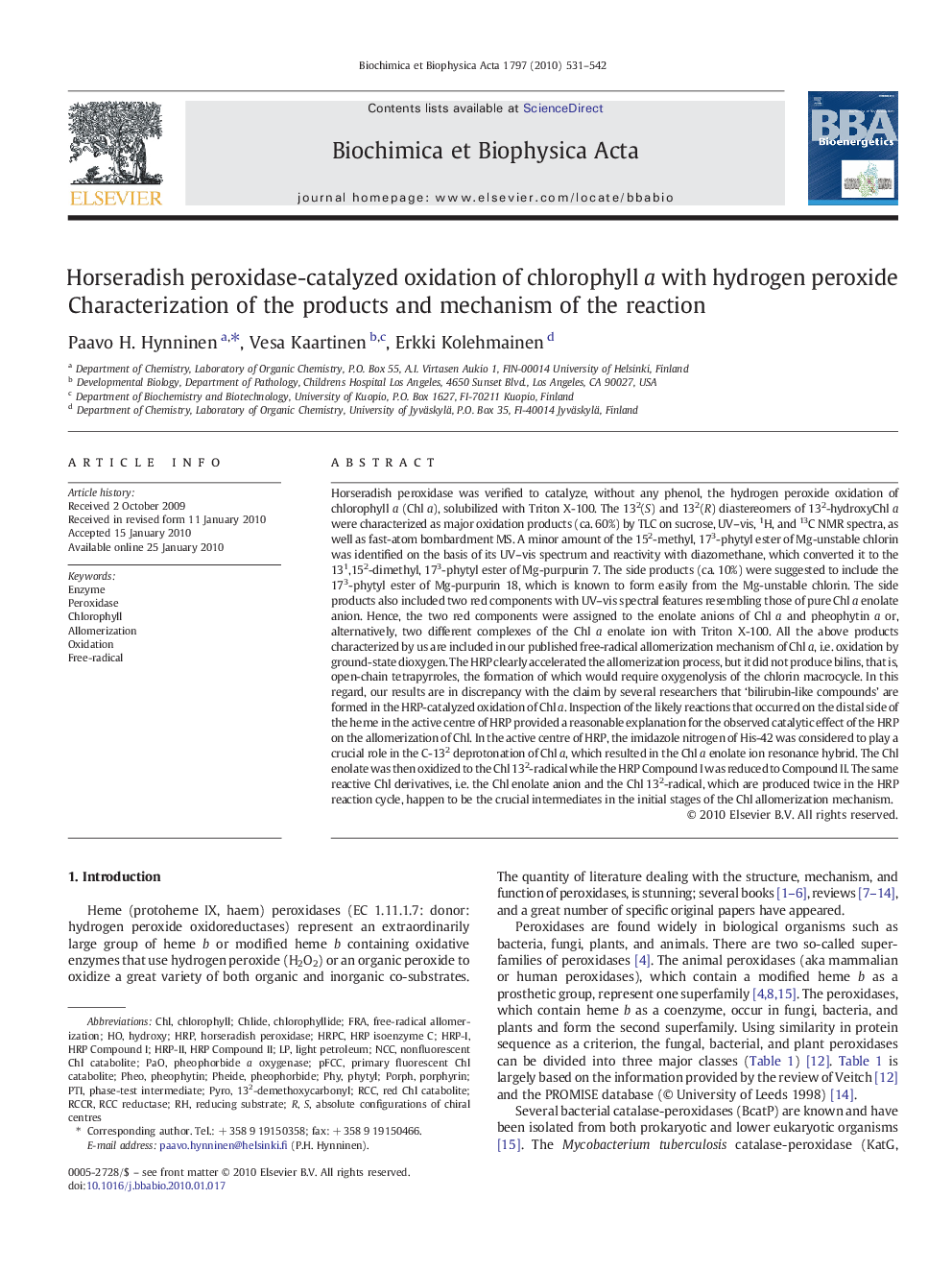| کد مقاله | کد نشریه | سال انتشار | مقاله انگلیسی | نسخه تمام متن |
|---|---|---|---|---|
| 1942872 | 1052636 | 2010 | 12 صفحه PDF | دانلود رایگان |

Horseradish peroxidase was verified to catalyze, without any phenol, the hydrogen peroxide oxidation of chlorophyll a (Chl a), solubilized with Triton X-100. The 132(S) and 132(R) diastereomers of 132-hydroxyChl a were characterized as major oxidation products (ca. 60%) by TLC on sucrose, UV–vis, 1H, and 13C NMR spectra, as well as fast-atom bombardment MS. A minor amount of the 152-methyl, 173-phytyl ester of Mg-unstable chlorin was identified on the basis of its UV–vis spectrum and reactivity with diazomethane, which converted it to the 131,152-dimethyl, 173-phytyl ester of Mg-purpurin 7. The side products (ca. 10%) were suggested to include the 173-phytyl ester of Mg-purpurin 18, which is known to form easily from the Mg-unstable chlorin. The side products also included two red components with UV–vis spectral features resembling those of pure Chl a enolate anion. Hence, the two red components were assigned to the enolate anions of Chl a and pheophytin a or, alternatively, two different complexes of the Chl a enolate ion with Triton X-100. All the above products characterized by us are included in our published free-radical allomerization mechanism of Chl a, i.e. oxidation by ground-state dioxygen. The HRP clearly accelerated the allomerization process, but it did not produce bilins, that is, open-chain tetrapyrroles, the formation of which would require oxygenolysis of the chlorin macrocycle. In this regard, our results are in discrepancy with the claim by several researchers that ‘bilirubin-like compounds’ are formed in the HRP-catalyzed oxidation of Chl a. Inspection of the likely reactions that occurred on the distal side of the heme in the active centre of HRP provided a reasonable explanation for the observed catalytic effect of the HRP on the allomerization of Chl. In the active centre of HRP, the imidazole nitrogen of His-42 was considered to play a crucial role in the C-132 deprotonation of Chl a, which resulted in the Chl a enolate ion resonance hybrid. The Chl enolate was then oxidized to the Chl 132-radical while the HRP Compound I was reduced to Compound II. The same reactive Chl derivatives, i.e. the Chl enolate anion and the Chl 132-radical, which are produced twice in the HRP reaction cycle, happen to be the crucial intermediates in the initial stages of the Chl allomerization mechanism.
Journal: Biochimica et Biophysica Acta (BBA) - Bioenergetics - Volume 1797, Issue 5, May 2010, Pages 531–542